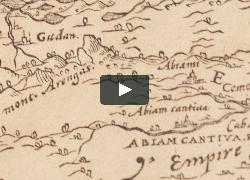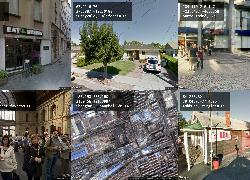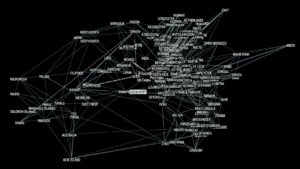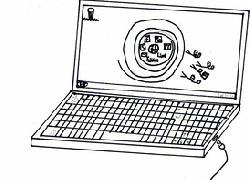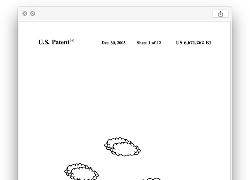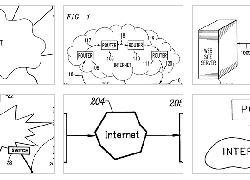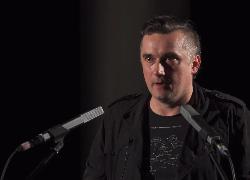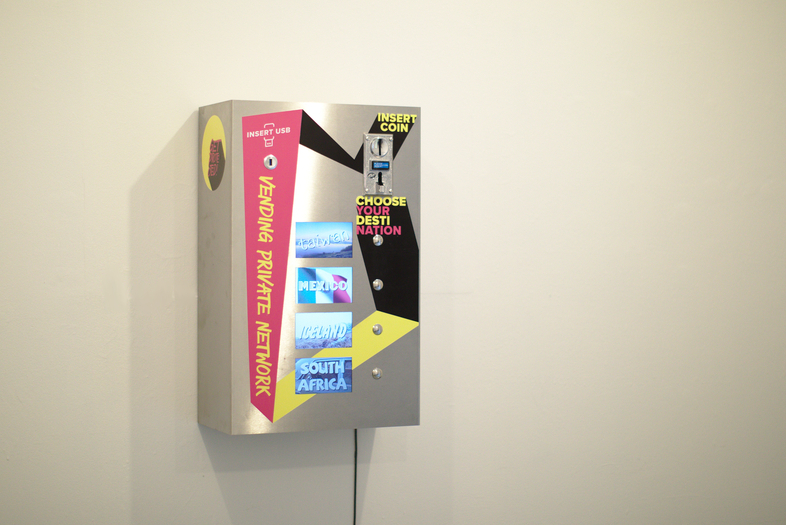http://rybn.org/thegreatoffshore/index.php?ln=fr&r=2.ALGOFFSHORES
"La serie ALGOFFSHORE est une collection d'algorithmes documentant différentes stratégies d'optimisation fiscale. La série est conçue sur une base documentaire d'étude de différents modèles classiques, les éléments récurrents qui structurent les différentes stratégies, au delà de leurs singularités respectives. La série cherche à montrer le génie ignoré qui se dissimule derrière les montages d'évasion fiscale."
···
http://rybn.org/thegreatoffshore/index.php
"The Great Offshore (Le Grand Large) est une œuvre documentaire qui nous invite à une immersion dans les profondeurs de la finance de l'ombre. L’œuvre rassemble des documents, des récits, des images et des objets, glanés au cours de voyages dans différents paradis fiscaux: à la City de Londres, en Suisse, au Liechtenstein, dans les îles Anglo-Normandes, à Dublin, au Delaware, aux Bahamas, aux Îles Caïmans, à Chypre, à Malte, aux Pays-Bas, au Luxembourg."
···
Article interview : https://www.zerodeux.fr/interviews/rybn/
et un autre : https://www.digitalmcd.com/rybn/
Network Toplogies
Link Density
...
Paul Baran’s three topologies of networks: centralized, decentralized, distributed.
traceroute
Simplified model of the internet. It’s made of routers. Home devices are connected to your router, which is connected to your internet network provider. Business and academic networks are similarly made up of individual computers connected to local routers, which are, in turn, connected to those institutions’ network providers. Mobile devices are connected to mobile network providers, and those providers in turn connect to other network providers to make sure your texts get to your friends phones and computers.
par Ben_Grosser 2015
computational surveillance system
Tracing You presents a website's best attempt to see the world from its visitors' viewpoints. By cross referencing visitor IP addresses with available online data sources, the system traces each visitor back through the network to its possible origin. The end of that trace is the closest available image that potentially shows the visitor's physical environment. Sometimes what this image shows is eerily accurate; other times it is wildly dislocated. What can a computational system know of our environment based on the traces we leave behind? Why might it want to see where we are?
DOUBLE NEGATIVE CAPTCHAs
Some resources on CAPTCHAs to read further, including scientific papers, patents, articles and books on artificial intelligence, computing, Turing tests, digital labor and cognitive extractivism. Along the lines of the article, by retro-engineering the system, you can sharpen your skills of behaving like a robot.
"In 2012 the Carna botnet was built and unleashed on the world. But it didn’t have any intentions on doing anything malicious. It was built just to help us all understand the Internet better. This botnet used the oldest security vulnerability in the book. And the data that came out of it was amazing.
The Carna botnet was used to scan the internet to create a map of where all the public facing computer are in the world. The map it created is remarkable."
PING MAP (#2011 ...)
A DYNAMIC MAPPING OF THE GLOBAL NETWORK BASED ON ECHO TIME
PING MAP is a world map that uses network access time as its unit of measure. Whereas internet giants are gradually dominating states’ powers, information superhighways and default web portals are in the process of conditioning a new hierarchy in information flows and mapping out a landscape that is specific to the Internet. PING MAP invites us to reconsider in a poetic and technical manner the very notion of world geography in the era of the Internet, //high_frequency_trading, submarine cables and other forms of automated routing.
Set against this //digital backdrop, the main measure of distance simply becomes the transmission time between servers and terminals. The new territorial and spatial structure formed by these digital transits reconfigures the positions of the countries of the world by projecting the better connected territories to the centre of an ever denser map and by forcing the slowest, most fragile and instable territories to the edges of the map, thereby forming a connectivity ghetto of sorts.
- Echo Protocol - Wikipedia
https://en.wikipedia.org/wiki/Echo_Protocol - Round-trip delay time — Wikipédia
https://fr.wikipedia.org/wiki/Round-trip_delay_time
Please draw a map of the internet, as you see it. Indicate your “home.”
:::
STP dessine moi une carte d'internet, comme tu le_la vois. Indique ta maison ( hôte demeure chez_soi )
Your age __________
Your occupation _____________________
Average number of hours per day on the internet ___________
Return to Kevin Kelly ...
+++
Certaines références au post-it de la NSA ...
http://www.slate.fr/monde/79514/parodies-slide-nsa-post-it-smiley-espionnage-google
>> https://mappa.mundi.net/maps/maps_010/
Internet representations extracted from the U.S. Patent database. 2019
cloud : me fait penser à :: https://liens.vincent-bonnefille.fr/?2vxoHA
By Noah Veltman
According to patent drawings, it's a cloud, or a bean, or a web, or an explosion, or a highway, or maybe a weird lump.
cloud : me fait penser à :: https://liens.vincent-bonnefille.fr/?pOZD_g
↳https://criticalengineering.org/projects/vending-private-network/ ( site )
↳https://julianoliver.com/projects/vending-private-network/ ( JOliver )
à propos de Vending Private Network VPN
In this talk, @Danja_Vasiliev gives an overview of "dark internet topologies" in the context of the commissioned piece //Vending Private Network// he did together with @Julian_Oliver ( 2018 )
Conf
Cite cette carte des câbles sous-marins :
https://www.submarinecablemap.com
Are.na ( adhoc_mesh_ntwrk )
https://www.are.na/vincent-bonnefille/adhoc_mesh_ntwrk
Membre du https://criticalengineering.org
@The_Critical_Engineering_Working_Group
2022 EDIT
- Submarine Cable Map 2015
https://submarine-cable-map-2015.telegeography.com/ - Traceroute mapper ( tool git )
https://stefansundin.github.io/traceroute-mapper/?trace=traceroute%20to%2083.118.202.51%20(83.118.202.51)%2C%2030%20hops%20max%2C%2060%20byte%20packets%0A%201%20%20livebox.home%20(192.168.1.1)%20%204.040%20ms%0A%202%20%2080.10.253.25%20(80.10.253.25)%20%209.688%20ms%0A%203%20%20*%0A%204%20%20*%0A%205%20%20ae51-0.nridf101.rbci.orange.net%20(193.252.98.94)%20%2012.098%20ms%0A%206%20%20*%0A%207%20%20*%0A%208%20%20*%0A%209%20%20*%0A10%20%20*%0A11%20%20*%0A12%20%20*%0A13%20%20*%0A14%20%20*%0A15%20%20*%0A16%20%20*%0A17%20%20*%0A18%20%20*%0A19%20%20*%0A20%20%2051.202.118.83.in-addr.arpa.celeste.fr%20(83.118.202.51)%20%2010.492%20ms%0A - History souces

---
Sous la forme d’une série d’hypothèses, l’atlas critique d’Internet développe 15 exercices conceptuels de spatialisation d'Internet. L’objectif de cet Atlas est d’utiliser l’analyse spatiale comme clé de compréhension des enjeux sociaux, politiques et économiques présents sur Internet. Tenter d’en cerner les contours nous permettra d’en comprendre les enjeux.Travail de recherche théorique et graphique initié et développé."
"Dans le but d’entreprendre la spatialisation d’Internet, j’ai organisé ma recherche sous la forme d’une suite d’hypothèses : une série de réflexions sur la représentation et la cartographie de l’espace d’Internet. Chacune de mes pistes est envisagée comme un exercice conceptuel de spatialisation qui est exposé par un ensemble d’éléments visuels (dessins, schémas, objets, modélisations 3D, animations vidéos). À la manière d’un processus scientifique, je justifie mes hypothèses par la présentation d’arguments tangibles et concrets de la structure d’Internet. "
Par @Louise_Drulhe
